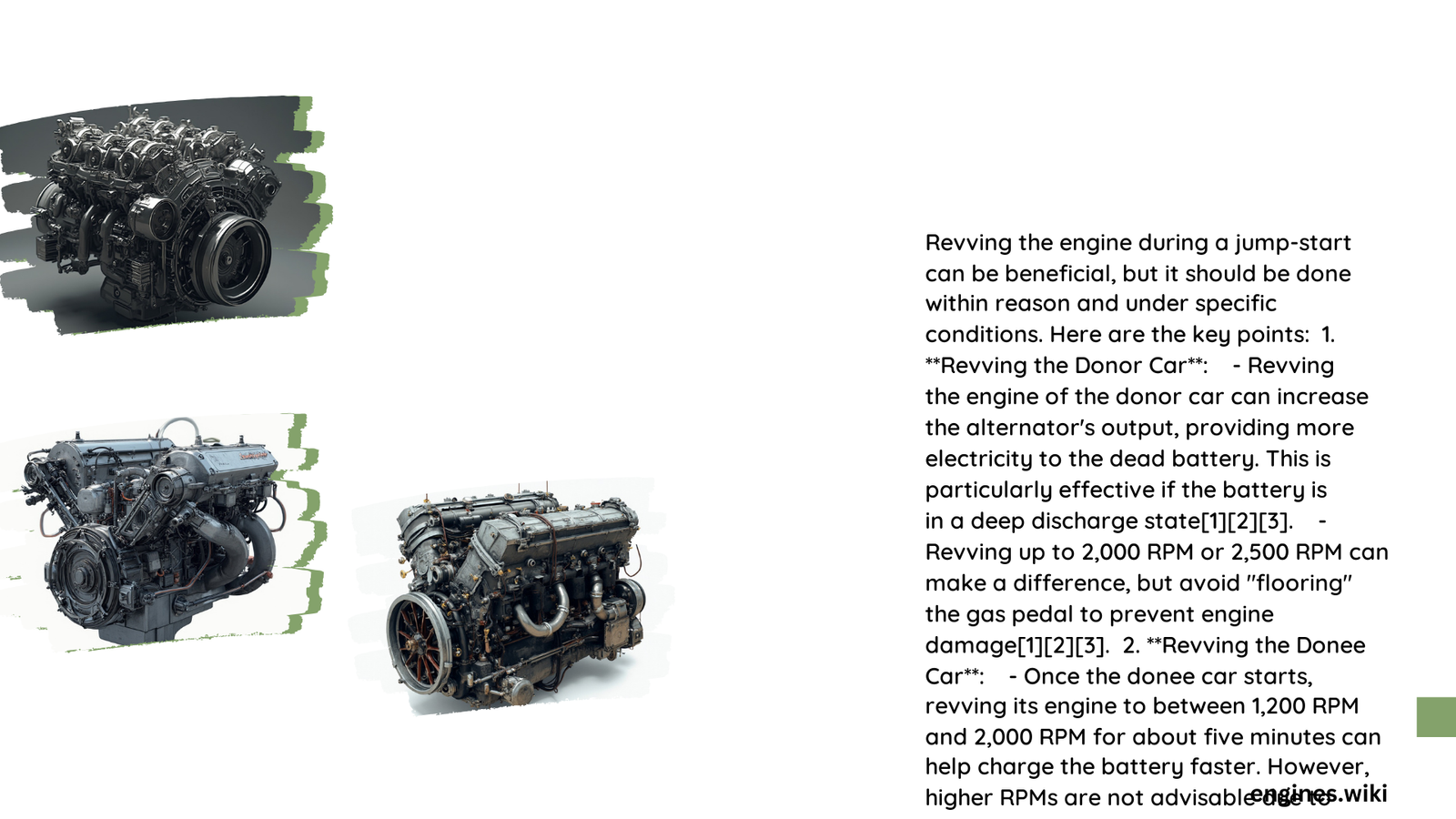When your vehicle’s battery dies, jump starting becomes a critical rescue technique. Understanding whether and how to rev the engine can make the difference between a successful restart and potential electrical system damage. This comprehensive guide reveals expert strategies for safely increasing alternator output during jump starts, ensuring your battery receives the right amount of electrical charge without risking component failure.
What Happens When You Rev Engine During Jump Start?
Revving the engine during a jump start serves a specific technical purpose: increasing the alternator’s electrical output. By carefully managing engine RPMs, you can accelerate battery charging and minimize potential risks.
Key Charging Dynamics
| RPM Range | Alternator Output | Battery Charging Efficiency |
|---|---|---|
| 1,000-1,500 | Low | Minimal Charging |
| 2,000-2,500 | Optimal | Maximum Charging |
| 3,000+ | Excessive | Potential System Strain |
Why Should You Carefully Control Engine RPM?

Electrical System Protection
- Prevent Overloading: Excessive RPMs can damage sensitive electrical components
- Optimize Charging: Maintain alternator within safe operational parameters
- Minimize Battery Stress: Gradual, controlled charging prevents potential damage
Step-by-Step Jump Start Process
Preparation Checklist
- ✓ Park vehicles on level ground
- ✓ Engage parking brakes
- ✓ Turn off all electrical accessories
- ✓ Inspect jumper cables for damage
Connection Protocol
- Connect positive (red) cable to dead battery’s positive terminal
- Connect positive cable’s other end to good battery’s positive terminal
- Connect negative (black) cable to good battery’s negative terminal
- Connect negative cable’s final end to unpainted metal ground on disabled vehicle
Optimal Revving Technique
- Start donor vehicle
- Allow engine to stabilize at idle
- Gradually increase RPM to 2,000-2,500
- Maintain consistent RPM during charging process
Potential Risks of Improper Revving
Electrical System Vulnerabilities
- Short Circuit Potential: Incorrect cable connections
- Alternator Overload: Excessive RPM beyond recommended range
- Battery Damage: Uncontrolled electrical surge
Expert Recommendations
Best Practices
- Use high-quality, well-maintained jumper cables
- Wear protective eyewear
- Avoid touching cable clamps during connection
- Monitor battery and electrical system after jump start
Technical Insights
Battery Charging Mechanics
Modern vehicles feature sophisticated charging systems that regulate electrical output. While manual RPM management helps, contemporary alternators include built-in voltage regulators that optimize charging independently.
Common Misconceptions
- Myth: Higher RPMs always mean faster charging
- Reality: Controlled, steady charging prevents potential damage
When to Seek Professional Help
Warning Signs
- Repeated battery failures
- Difficulty maintaining consistent charge
- Unusual electrical system behavior
- Visible battery damage
Final Recommendations
- Maintain regular battery maintenance
- Keep jumper cables in vehicle emergency kit
- Learn proper jump start techniques
- Consider professional inspection if persistent issues occur
Pro Tip: Always consult your vehicle’s manual for specific manufacturer recommendations regarding jump starting procedures.
